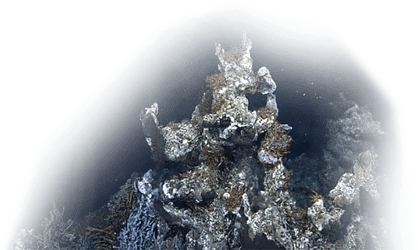NEWS RELEASE
Alerts
SHOWING 5 RESULTS
Showing matches for "Antarctica observatory"
Canada and Spain scientists establish new Antarctic Ocean observatory
Overview
Data now flowing from new Antarctic Ocean observatory
Overview
Antarctica has today become home to a new subsea observatory providing near real-time ocean data, year-round, thanks to a [new partnership](https://www.uvic.ca/news/topics/2024+onc-antarctic+media-release) between Canada and Spain scientists.
ONC expands Antarctic monitoring with deep ocean Argo floats
Overview
Ocean Networks Canada (ONC) has expanded its ocean monitoring infrastructure in the Southern Ocean with the deployment of two deep-sea Argo floats this month which are now transmitting open access ocean data.
The scientific instruments were released on February 3, 2024 (GMT) by ONC's partner, the Spanish National Research Council (CSIC), into Drake Passage, the body of water between the southernmost point of South America and the South Shetland Islands of Antarctica (*61 48.27255' S, 64 00.78831' W and 61 48.32472' S, 64 00.788836' W*).
ONC Antarctic observatory prepared for polar winter
Overview
Staff with the 37th Spanish Antarctic Campaign have been hard at work preparing the Ocean Networks Canada (ONC) Antarctic Ocean subsea observatory for the impending harsh polar winter in the southern hemisphere.
The observatory - which is a partnership between ONC and the Spanish National Research Council (CSIC) - has been successfully transmitting ocean data since its [January 2024 deployment](https://www.oceannetworks.ca/news-and-stories/stories/data-now-flowing-from-new-antarctic-ocean-observatory/), 25 metres below the surface, in a bay near the Spanish Antarctic Station ([BAE](http://www.utm.csic.es/es/instalaciones/jci)), Juan Carlos I, located on Livingston Island.
The research station is staffed during the warmer summer months but inaccessible during the polar winter, so staff have been prepping the observatory to (hopefully) withstand the dramatic seasonal changes ahead. At the height of winter, approximately 15 million square kilometres of sea ice can form at the surface of the Antarctic Ocean (aka the Southern Ocean), that will move with the currents and winds, and collide with each other and the coastline.
Watch this video showing how CSIC has armoured and secured the observatory cables to the shore to minimize potential damage by sea ice impact and rough tides.
New ONC partner observatory expands monitoring in Southern Ocean
Overview
*Update (March 31, 2025). The new observatory’s Iridium shore system and controller are powered and transmitting, but ONC is investigating issues with the CTD and interruptions in data flow from the instrument. Investigations are being conducted remotely, as the station is now closed for the winter.*
Ocean Networks Canada (ONC) and its European partner have successfully deployed a new replacement subsea cabled observatory in Antarctica, significantly improving its capacity to deliver high quality data on near real-time environmental changes to the Southern Ocean.
The ongoing partnership between ONC, a University of Victoria initiative, and the Spanish National Research Council (CSIC) continues to advance our scientific understanding of one of the least observed parts of the planet, the Southern Ocean, or the Antarctic Ocean. Watch the video explaining our partnership.
Stay up to date with ONC
Subscribe

Ocean-Climate Building University of Victoria
#100, 2474 Arbutus Road, Victoria, BC, Canada, V8N 1V8
info@oceannetworks.ca+1 (250) 472-5400Marine Technology Centre University of Victoria
#106, 9865 West Saanich Road, North Saanich, BC, Canada, V8L 5Y8
info@oceannetworks.ca+1 (250) 472-5400@ 2025 Ocean Networks Canada. All rights reserved.